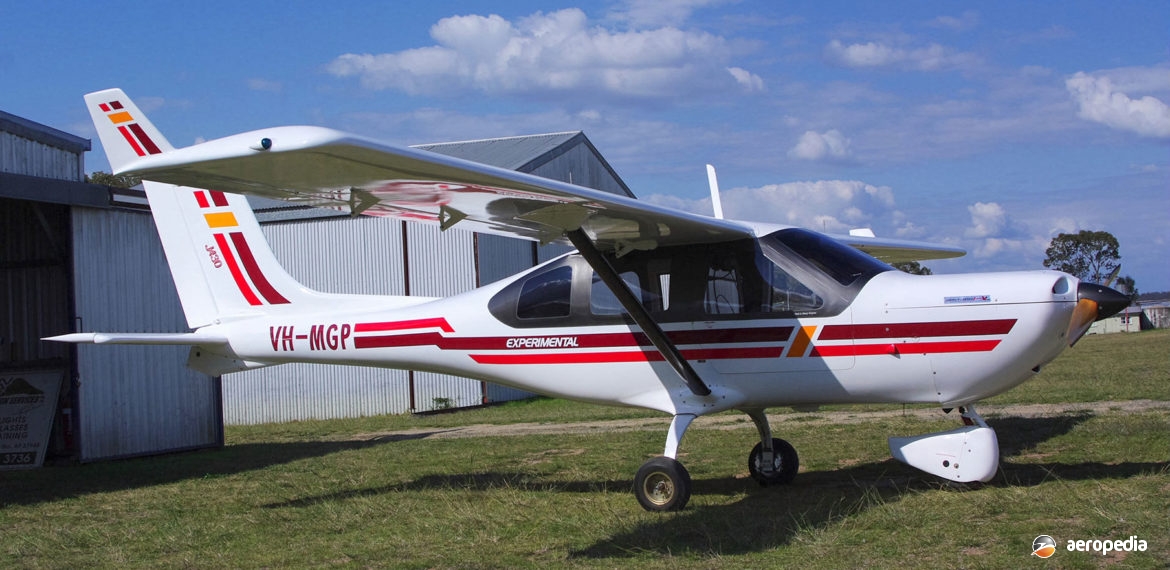Photograph:
Jabiru J-430 VH-MGP (c/n 119) at Willowvale, QLD in August 2010 (David C Eyre)
Country of origin:
Australia
Description:
Two / four-seat light sport monoplane
Power Plant:
One 90 kw (120 hp) Jabiru 3300 four-cylinder horizontally-opposed air-cooled engine
Specifications:
- Wingspan: 9.43 m (30 ft 11 in)
- Length: 6.55 m (21 ft 6 in)
- Height: 2.4 m (7 ft 10 in)
- Wing area: 9.34 m² (100.5 sq ft)
- Max speed: 256 km/h (160 mph)
- Cruising speed: 222 km/h (138 mph)
- Max manoeuvring speed: 212 km/h (132 mph)
- Stalling speed clean: 92 km/h (57 mph)
- Stalling speed full flap: 84 km/h (52 mph)
- Rate of climb at sea level: 213 m/min (700 ft/min)
- Service ceiling: 4,572 m (15,000 ft)
- Take-off roll: 150 m (492 ft)
- Landing roll: 220 m (820 ft)
- Fuel capacity: 135 litres (30 Imp gals)
- Range no reserve: 1,480 km (920 miles)
- Endurance no reserve: 6.7 hrs
- Empty weight: 340 kg (748 lb)
- Useful load: 360 kg (792 lb)
- Loaded weight: 700 kg (1,540 lb)
History:
One of a range of light aircraft produced by Jabiru Aircraft Pty Ltd at its facility at Bundaberg, QLD, the J-430 series was larger than previous models and was designed to seat either two or four persons and operate as a touring aircraft for the operator. It was constructed from composite materials and was a high-wing monoplane with a strut-braced wing with winglets, being powered by a 90 kw (120 hp) Jabiru 3300 six-cylinder engine and fitted with a tricycle undercarriage with optional wheel covers.
The J-400 was introduced to the range with the Jabiru 3300 engine in 2004. The J-430 was developed from this, being similar to the J-230 which was a two-seater with a large baggage area behind the seats, whereas the J-430 had two seats in the former baggage compartment for children. A further development has been the J-450, this being a variant with a short take-off and landing (STOL) wing for operation from shorter strips. This aircraft had a longer tail boom which gave the aircraft more elevator and empennage authority, reducing the stall speed and increasing directional stability.
By mid 2018 some 6,500 Jabiru engines had been delivered around the world, with 2,000 of these installed in Jabiru light aircraft, at that time developed examples of the Jabiru series of engines having been placed in production and becoming known as the Generation 4 engine.

